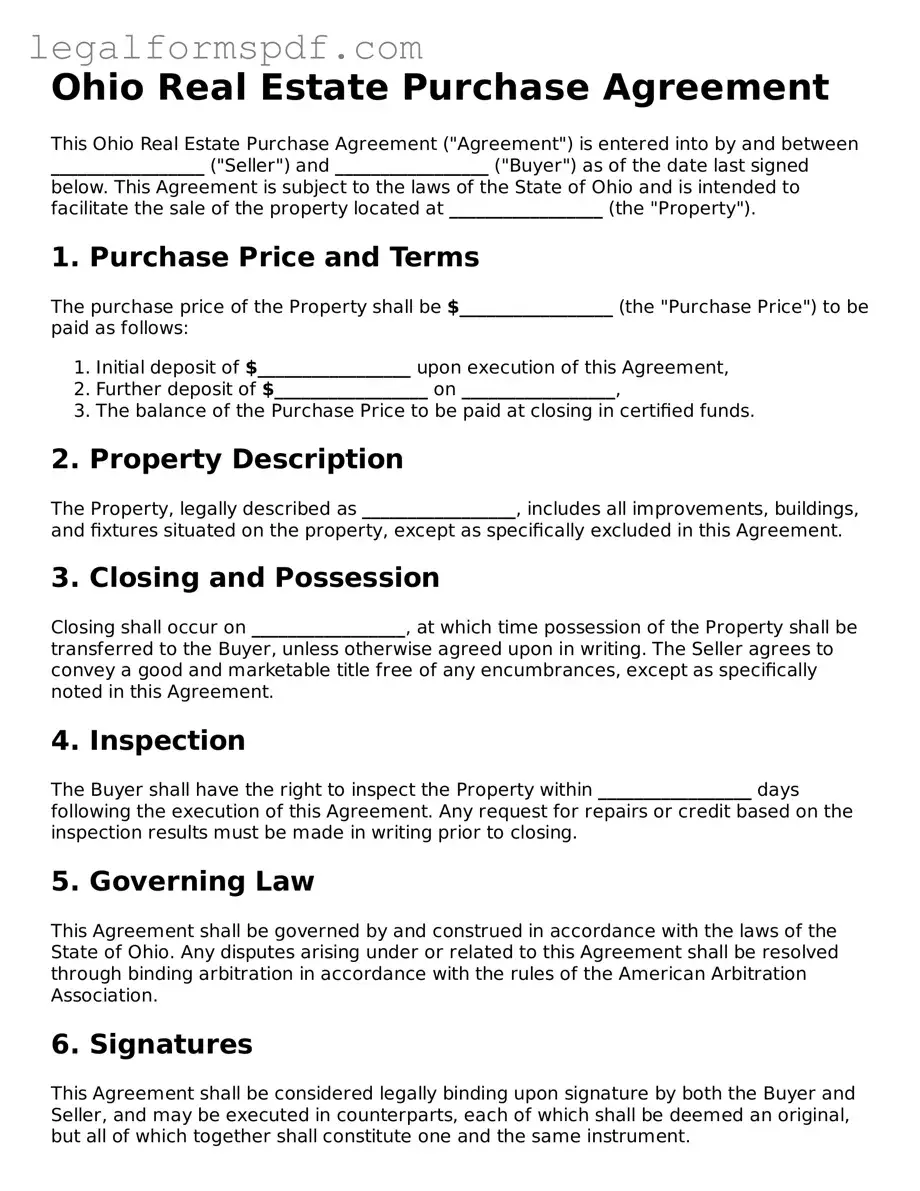What is the Ohio Real Estate Purchase Agreement?
The Ohio Real Estate Purchase Agreement is a legally binding document that outlines the terms and conditions of the purchase and sale of real estate in the state of Ohio. This includes the price, property details, and responsibilities of both the buyer and seller.
Who needs to sign the Ohio Real Estate Purchase Agreement?
The Ohio Real Estate Purchase Agreement must be signed by all parties involved in the transaction. This includes the buyer(s) and seller(s) of the property. If the property is owned by more than one person or by a corporation, all owners must sign the agreement.
What should I look for in an Ohio Real Estate Purchase Agreement?
When reviewing an Ohio Real Estate Purchase Agreement, pay close attention to the purchase price, property description, closing date, and any contingencies that must be met before the sale can finalize, such as home inspections or financing. Additionally, look at the responsibilities assigned to both the buyer and seller.
Is a deposit required when signing the Ohio Real Estate Purchase Agreement?
Yes, a deposit, often called earnest money, is typically required when signing the Ohio Real Estate Purchase Agreement. This acts as a token of the buyer's intention to purchase the property and is usually applied to the purchase price at closing.
Can either party back out of the Ohio Real Estate Purchase Agreement after it is signed?
After the Ohio Real Estate Purchase Agreement is signed, backing out without a legally valid reason can lead to penalties. However, the agreement may contain contingencies that allow either the buyer or seller to withdraw under specific conditions without penalties.
How is the closing date decided in the Ohio Real Estate Purchase Agreement?
The closing date, which is when the official transfer of ownership takes place, is mutually agreed upon by the buyer and seller and specified in the Ohio Real Estate Purchase Agreement. This includes the completion of all legal and financial obligations outlined in the agreement.
What happens if the property fails an inspection?
If the property fails an inspection, the Ohio Real Estate Purchase Agreement may allow the buyer to request repairs, renegotiate the purchase price, or withdraw from the agreement altogether, depending on the specific terms laid out in the inspection contingency clause.
Does the Ohio Real Estate Purchase Agreement have to be notarized?
While the Ohio Real Estate Purchase Agreement itself does not require notarization, other related documents, such as the deed, typically must be notarized to be recorded with the county.
What if there are changes to the agreement after it is signed?
Any changes to the Ohio Real Estate Purchase Agreement after it has been signed must be agreed upon by both the buyer and seller, documented in writing, and signed by all parties involved.
Who is responsible for preparing the Ohio Real Estate Purchase Agreement?
Either a real estate agent, attorney, or legal document preparer can prepare the Ohio Real Estate Purchase Agreement. It's crucial that the person preparing the document has a good understanding of Ohio real estate laws to ensure that the agreement complies with state requirements and protects the rights of both parties.
